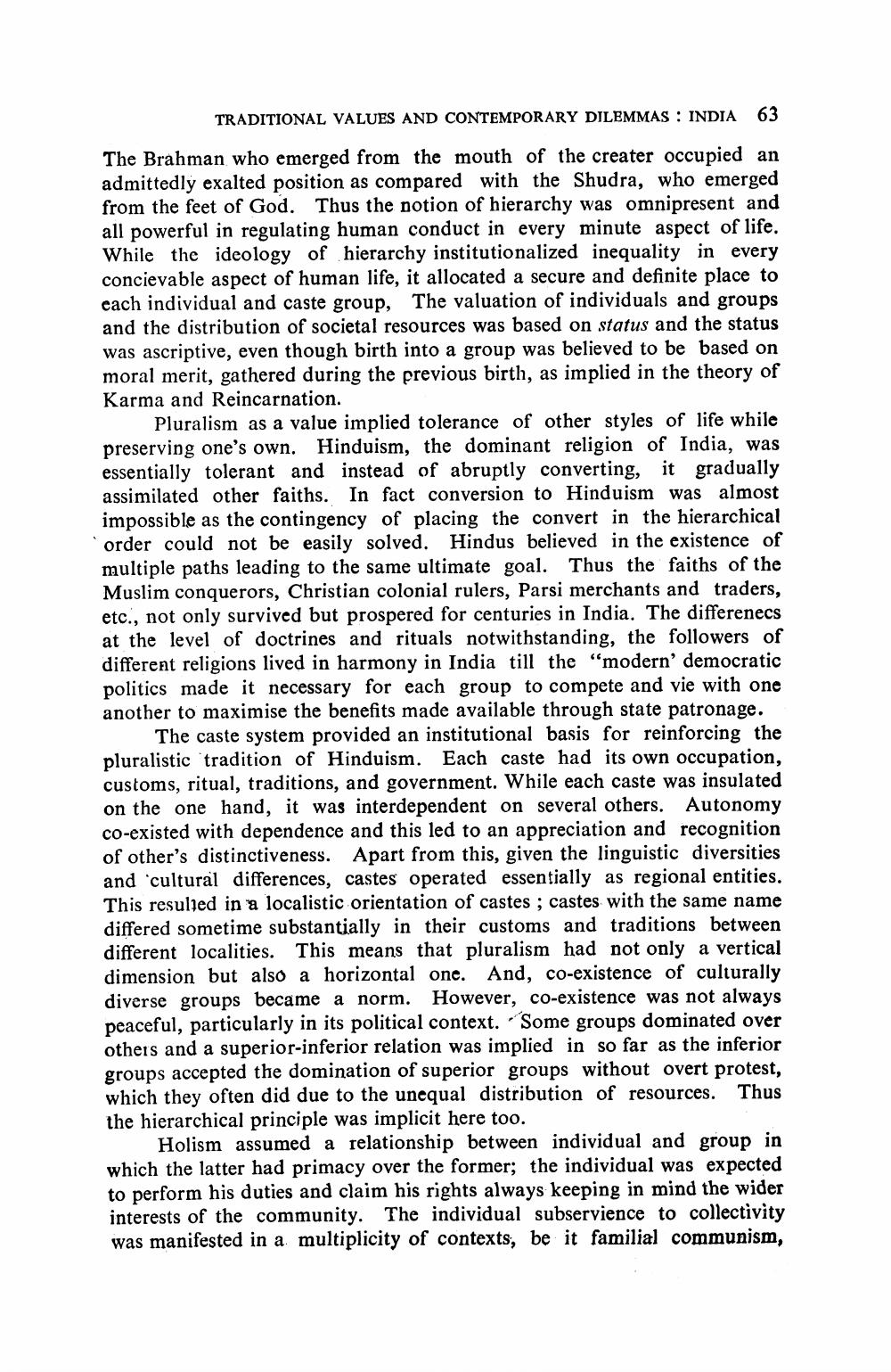________________
TRADITIONAL VALUES AND CONTEMPORARY DILEMMAS : INDIA 63
The Brahman who emerged from the mouth of the creater occupied an admittedly exalted position as compared with the Shudra, who emerged from the feet of God. Thus the notion of hierarchy was omnipresent and all powerful in regulating human conduct in every minute aspect of life. While the ideology of hierarchy institutionalized inequality in every concievable aspect of human life, it allocated a secure and definite place to each individual and caste group, The valuation of individuals and groups and the distribution of societal resources was based on status and the status was ascriptive, even though birth into a group was believed to be based on moral merit, gathered during the previous birth, as implied in the theory of Karma and Reincarnation.
Pluralism as a value implied tolerance of other styles of life while preserving one's own. Hinduism, the dominant religion of India, was essentially tolerant and instead of abruptly converting, it gradually assimilated other faiths. In fact conversion to Hinduism was almost impossible as the contingency of placing the convert in the hierarchical order could not be easily solved. Hindus believed in the existence of multiple paths leading to the same ultimate goal. Thus the faiths of the Muslim conquerors, Christian colonial rulers, Parsi merchants and traders, etc., not only survived but prospered for centuries in India. The differenecs at the level of doctrines and rituals notwithstanding, the followers of different religions lived in harmony in India till the "modern' democratic politics made it necessary for each group to compete and vie with one another to maximise the benefits made available through state patronage.
The caste system provided an institutional basis for reinforcing the pluralistic tradition of Hinduism. Each caste had its own occupation, customs, ritual, traditions, and government. While each caste was insulated on the one hand, it was interdependent on several others. Autonomy co-existed with dependence and this led to an appreciation and recognition of other's distinctiveness. Apart from this, given the linguistic diversities and cultural differences, castes operated essentially as regional entities. This resulted in a localistic orientation of castes; castes with the same name differed sometime substantially in their customs and traditions between different localities. This means that pluralism had not only a vertical dimension but also a horizontal one. And, co-existence of culturally diverse groups became a norm. However, co-existence was not always peaceful, particularly in its political context. Some groups dominated over others and a superior-inferior relation was implied in so far as the inferior groups accepted the domination of superior groups without overt protest, which they often did due to the unequal distribution of resources. Thus the hierarchical principle was implicit here too.
Holism assumed a relationship between individual and group in which the latter had primacy over the former; the individual was expected to perform his duties and claim his rights always keeping in mind the wider interests of the community. The individual subservience to collectivity was manifested in a multiplicity of contexts, be it familial communism,




